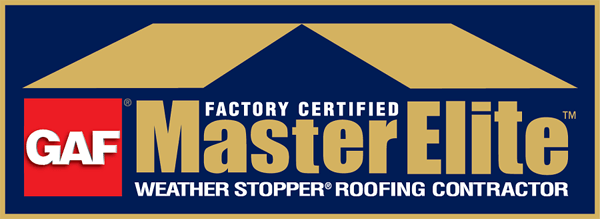Whether it’s planning a full-scale home renovation or just a bathroom or kitchen remodeling project, a design brief is needed to keep things in order. There are a lot of details involved in planning such a project, but a design brief helps you guide through them so you can visualize what the outcome should look like.
A design brief will give you a clear understanding of the project, which will also help you negotiate and navigate your way through the more difficult parts of a remodel. And by working with experts such as our team at Evergreen Renovations & Roofing, you can be confident that your home remodel gets done professionally and efficiently.
Planning your design brief usually involves working with your trusted contractor. But here’s what you can do first:
Make a List of Questions
At the very first stages of planning your remodel, you’ll need to establish a list of questions that can help you get a clearer picture of what you want with your project. This also helps get to your goals faster. By grabbing a design questionnaire from an online resource, it makes things easier for you to create a project checklist.
Here are some sample questions to get you started:
- What kind of style do you require for your remodel? Are you going for contemporary, traditional, industrial, modern, minimal, or rustic?
- How much time and energy are you willing to invest in maintaining your home?
- How many people live in your home? Do they need special accommodations such as an ADU Accessory Dwelling Unit?
- How many pets do you have in your home?
- How many floors or rooms are you planning to do? What’s the use of each room?
- What particular areas would you like to be more private than others?
- Do you, your spouse, or family members have any specific accessibility requirements?
- Are you planning to add sustainability and energy efficiency features?
Even the little details count on your design brief! Make sure you cover both obvious as well as design-specific questions so you can highlight possible or future issues with your project. This is important especially when it comes to explaining your needs and preferences to your hired contractor. Remember, your needs are different from your wants, so be sure to have a thorough discussion with your contractor.
Making Your Design Brief
When you start working on your design brief with your trusted contractor, be sure to keep these points in mind:
- Set Goals and Objectives – The list of materials for your design might be too long, and you’ll have to make sure to stay within your budget if you have one. But as you get your list of questions down, you’ll find it easier to describe what you want the final design of your bathroom remodeling project to encompass. Creating an ultimate list will help you explore how you can reach your goals and objectives for the project.
- Determine Your Style and Scope – As a homeowner, you might have very distinct likes and dislikes, though you’re not always good at expressing and bringing them all together. To remedy this, you can make use of online tools such as mood board creators, as well as floor-plan sites and visual pinboards such as Pinterest. These can help you visualize the themes and ideas for your project, and exploring what you don’t normally do can sometimes help in focusing on what you really want for your design.
- Schedule Deadlines Wisely – Although most homeowners focus on the dollar value of renovation costs, scheduling is also an essential factor, especially since bad planning can delay your project and drive up costs quickly. This is one of the biggest reasons why it’s more cost-effective to hire a project manager or interior designer who can manage the costs and processes of your bathroom remodeling. This also helps provide peace of mind, which is particularly important if your remodel needs to be completed by a certain date or you have to move out during the renovation process.
- Keep It Within Your Budget – At this point, it’s more important than ever to understand the costs involved with creating what you want. For instance, if you’re doing a simple refresh of a space, this may just involve researching products online and in-store for visualization and a spreadsheet of purchase prices. Remember, a full renovation will need to include not only product costs but labor costs and possible council fees as well.
Make sure that you’re realistic with your budget and scheduling needs, and that you understand the time and costs involved with each step of the process so it stays in check. Talk to your project manager and contractor and discuss other options and alternatives if one choice is unaffordable or unavailable.
Finalizing Your Design Brief
The last part of planning your design brief is to bring it all together. You should have an overview of what you think you need for your home bathroom or kitchen remodeling project in a fairly detailed list that describes what each part should contain and how it should feel.
Be aware that you might have made a few mistakes during this process, so be sure to check your design brief one more time and check whether you didn’t commit certain mistakes, such as:
- Not Thinking Far Ahead – Once the project is complete and your home is newly renovated, you’ll likely stick with it for several years before you consider a remodel again. There’s no telling what can happen by then, but it does help to allow a bit of flexibility in your design now so it can grow together with you and your spouse/family. Should circumstances change unexpectedly, your newly-renovated home can be ready to adapt.
- Not Considering Your Family’s Opinions and Feelings – Although you’re the one mostly leading the whole design process, that doesn’t mean you should leave your spouse or the rest of your family out of the picture. It helps that you discuss your design brief with the rest of the occupants of your home so you can listen to their thoughts and suggestions and incorporate them into your overall design.
- Favoring Beauty Over Function – While beauty and aesthetics can mesmerize, function and practicality is much more favorable in the long run. Make sure to plan your remodel in favor of quality and comfort; you can worry about the looks later.
Working with Evergreen Renovations & Roofing is one of the best decisions you’ll make for your kitchen remodel or ADU Accessory Dwelling Unit. Call us today at (503) 720-4699 or you can fill out our online form.




